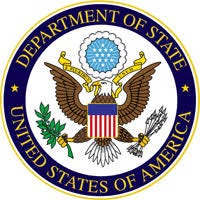Why Trump May Not Issue Green Cards To Foreign Graduates
Indian students considering education abroad should ignore Donald Trump’s proposal of green cards for foreign graduates
(Photo: Courtesy Creative Commons.)
June 22, 2024
Republican candidate Donald Trump regularly says that, if elected President, he will make major changes in healthcare, jobs, inflation, foreign wars, and other policies. His wide range of proposals, which get extensive media attention in the United States, are aimed at different groups of voters and campaign donors. For instance, he is trying to win the votes of suburban women by saying the legality of abortions is a state issue and not a decision to be made by the president.
The media also report about conservative groups, who support Trump, but oppose his proposal. Usually the same day, Trump’s campaign staff issue clarifications which dilute, or even reverse, his policy change proposals, often saying it was misrepresented by the media.
Apparently, such confusion is intentional: Trump seeks to secure votes and donations from those who blindly hope he will change policies while simultaneously reassuring his base of voters that there will be minimal, if any, policy changes.
This sequence of events played out again this week during Trump’s visit to Silicon Valley, California, where he raised $12 million for his campaign. Trump told a podcast host, Reuters reported, "I do promise…You (foreign student) graduate from a college, I think you should get automatically as part of your diploma a green card to be able to stay in this country and that includes junior colleges too."
The statement was widely covered by media in the U.S. as well as, not surprisingly, in India. There are roughly 270,000 Indian students in the U.S., a quarter of all foreign students in the country. Also, 1.2 million Indians in the U.S. on temporary work visas, and their dependents, are waiting in line for a green card, or permanent resident visa. The wait is more than 17 years for recent applicants.
“Trump stuns immigration world by promising green cards to all foreign graduates,” was the headline, for instance, of a story in The Times of India. “Trump Promises Green Cards For Foreign Graduates,” was the headline in The Hindustan Times.
Several conservative backers of Trump attacked his proposal. The Trump handout “would reduce wages for all Americans, increase job competition, particularly for recent college graduates, and pose a threat to national security,” Chris Chmielenski, the president of the conservative Immigration Accountability Project told The New York Post.
Another criticism is that Trump’s plan would “give green cards to military-age males from China.” Nearly 290,000 of the 1.1 million foreign students in the U.S. are Chinese. Recently Trump has said the rise in immigrants from China to the U.S. shows that the Chinese government is building an army (small and poorly equipped) within the U.S.
Hours after Trump’s green card proposal and the criticisms were widely covered by the media in the U.S., his campaign staff issued a clarification. Green cards will be issued only to the “most skilled graduates who can make significant contributions to America,,,(and) who would never undercut American wages or workers,” a campaign spokesperson said in a statement. Also, the applicants would be screened through an “aggressive vetting process” that would “exclude all communists, radical Islamists, Hamas supporters, America haters and public charges.”
Such a clarification, hinting at excluding those from communist China from receiving the green cards, was viewed by the Indian media as being beneficial to Indian graduates of U.S. universities. “AHEAD OF U.S. ELECTIONS, TRUMP MAKES BIG PRO-INDIA PROMISE,” was the sub-title of a story in The Hindustan Times.
(Image courtesy Creative Commons.)
Most Indians pursuing college degrees in the U.S. take on bank loans, ranging from $100,000 to more than $200,000, to pay the fees and living expenses. Often, the family home in India is put up as collateral for the loans, which currently carry annual interest rates of around 9%.
In most fields, the huge excess supply of fresh graduates compared to hiring demand from employers implies that at best only one in four Indians, who graduated from U.S. universities last month, may find jobs in the U.S. on temporary work visas. This is also likely to be the case for most Indians with advanced science, technology, engineering, and math (STEM) degrees from the top U.S. universities.
Even assuming an Indian can find work in the U.S. upon graduation, the job usually does not last long. In 2022 and 2023, an estimated 150,000 Indians on temporary work visas in the U.S. - many of them waiting in line for permanent residency or green cards - were laid off.
The total number of Indian professionals in the U.S. who effectively lose their jobs each year is much higher. There are several thousand Indians on practical training visas who are not re-hired on professional or H-1B work visas. Also, there are thousands on H-1B visas who are not sponsored for a green card. Their employment ends after one or three years, for those on practical training visas, or after six years, for those on H-1B visas. Such job cuts are typically not disclosed by employers on technical grounds that an employee’s work visa had expired.
Trump’s proposed exclusion of graduates depending on “public charges” could mean an Indian who got any funding from a state college or a government benefit may not qualify for a green card.
More important, even if Trump wins re-election in November, there is little chance of Trump granting green cards to fresh foreign graduates, notes Philip Bump, a columnist for The Washington Post .“(H)is scattershot campaign agenda makes no mention of it and he does have a demonstrated habit of making things up as he goes.”
In addition to strong opposition from his base of conservative voters, there is another major reason why his proposal is unlikely to be implemented. Executives at major U.S. technology companies and their lobbyists issue periodic statements asking the U.S. administration to issue more temporary work visas and green cards. Yet, despite their massive financial and political clout, the tech companies have not gotten an increase in green cards over the past 32 years.
It appears that companies in the U.S. manage their supply of entry level engineers, and other skilled technical professionals, by using the swing labor capacity provided by foreigners, mainly Indians, and the system of temporary work visas.
The hiring and firing of foreigners on temporary work visas effectively provides a swing capacity of skilled labor for U.S. companies and organizations. In 2022, for instance, the top 30 employers of temporary workers on H-1B visas hired more than 34,000 new workers, according to a report by the Economic Policy Institute. In 2022, and the first quarter of 2023, the top 30 H-1B employers also laid off at least 85,000 H-1B workers.
Also, when he was president, from 2016 to 2020, Trump cut back on issuance of temporary work visas, green cards, and other forms of legal immigration. In 2020, during the COVID-19 pandemic, he sought to deport foreign students studying in the U.S. as well as cut the number of temporary work visas.
Non-U.S. citizen college students should "leave the country and go home immediately after graduation," Steve Bannon, a former Trump adviser and part of Trump's "Make America Great Again" movement, told Newsweek. "Green cards for foreign college graduates is not a plan—President Trump tossed out an idea on a podcast—and his most fervent supporters tossed it back."



